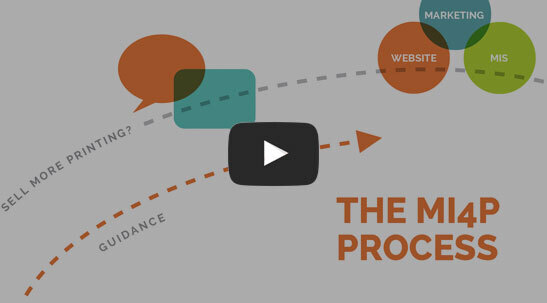Print 18: Post-Show Tips for Printers to Get the Best ROI

The PRINT 18 Conference in Chicago is only days away!
Are you getting excited? We sure are!
Attending a trade show or industry event offers visitors incredible benefits like connection and knowledge building, scoping out the competition, and many others. When planned correctly, you can be sure to get the greatest return on your investment and your time spent away from the office.
But what happens after the trade show when you’re back in the everyday life of running a company? How can you plan to bring all that you’ve learned back to the office and actually implement it in some way?
Here are a few tips that will help you apply what you’ve learned from PRINT 18 (or any trade show) and move forward once you return home:
Survey Your Loot
If you were a good, lil’ information pirate at the show, you should be walking out of that convention center with a whole bounty of product and service information, marketing brochures, swag, and more.
But, do you really need all of it?
Set aside some time to go over everything you’ve collected. Review and sort the collateral you’ve received into three piles:
- To Pursue Further (Needs action)
- Hold For Now (No action required)
- Trash (No action, no interest)
Once you know what you’re dealing with, you can more efficiently execute a plan of action.
Take the Initiative
Remember how we talked about setting up your meetings ahead of time? That same principle applies here.
Having 22,000 visitors attend a trade show means you are not the only lead that vendors and exhibitors will be following up. If you have a question you need answered right away to move you further along in your decision, now is not the time to wait for the world to come to your doorstep.
Instead, do your part. Take the initiative in reaching out and setting up an appointment. Be as ruthless in fighting for the best for your company as they are in fighting for theirs.
Prepare a list of Questions
Now that you’ve secured your appointment time, take the time to prepare for it.
When going through the information you received, grab a piece of paper and a pen and write down any questions that pop up as you’re reading. Are the costs clear? Are there any hidden fees not listed in their literature? How long will it take to implement the solution? What hurdles do you see?
By taking the time ahead of time to lay out these types of questions, you set yourself up from the beginning for a smooth appointment and a smooth start to a possibly long business relationship.
Keep in mind, your list of questions shouldn’t just be for your vendor or exhibitor. While you’re doing this pen and paper exercise, consider making two columns on that piece of paper. On one side list your questions for the vendor, but on the other side, list what needs to be addressed with your leadership team. What do they think about this new product or service solution? What potential pitfalls or successes do they see from implementing this?
Remember, there is wisdom in numbers!
Determine Who Gets What
Continuing on with your preparation, it’s possible that not everyone on your leadership team will need to be involved with each of the solutions you’re exploring.
Perhaps you grabbed new press literature. Grab an envelope, throw that information in there, and label it with your production manager’s name. Maybe you explored a new CRM system. That might go in the envelope marked with your customer service manager’s name on it.
Take the time when divvying up your loot to get the right information to the right people. Then, put your heads together to decide if they think any of the options you found were worth pursuing.
Set Goals
With any new endeavor, you need to set a target to aim for.
Where do you need to be with these potential opportunities 30, 60, and 90 days from now? Set those goals now and lay out your plan for implementation.
If you’re not sure where to start with goal setting, start big and work your way smaller. For example, maybe the first 30 days are spent on each department head reviewing the material you brought them, giving them plenty of time to research it on their own and digest it some. Then, day 31-60 is spent on coming back together as a team and evaluating what you’re going to pursue and what isn’t going to make the cut at this time. Finally, days 61-90 could be followed up with really digging into the solutions you’ve decided on as a team to move forward with, performing a cost-analysis, etc.
Within each of those 30-day chunks, break it down into more specifics of what you want to have accomplished during that time frame. And remember, think S.M.A.R.T. goals. Your goals should be Specific, Measurable, Actionable, Relevant, and Time-Bound.
Evaluate
In the end, your return on investment in attending a trade show will all come down to your evaluation.
- Did the product and service solutions you learned about turn into real ways to help you increase your revenue, decrease your costs, or help you mitigate risks?
- Did the relationships you cultivated and the networking you shared in help you to become a better business owner? Will you know who you can call and lean on when you need support or did you meet someone who would benefit from your expertise in the industry?
- Was the simple act of stepping away from the business to work on the business enough to give you the breath of fresh air you needed to step forward with a renewed vision and confidence for your print company?
If you walk away from PRINT 18 being able to say yes to any of those questions, you can be sure that your investment will pay dividends.
Want more tips like this? Visit us at the show at Booth 322 or sign up now to receive the latest updates and ideas from Marketing Ideas For Printers.

